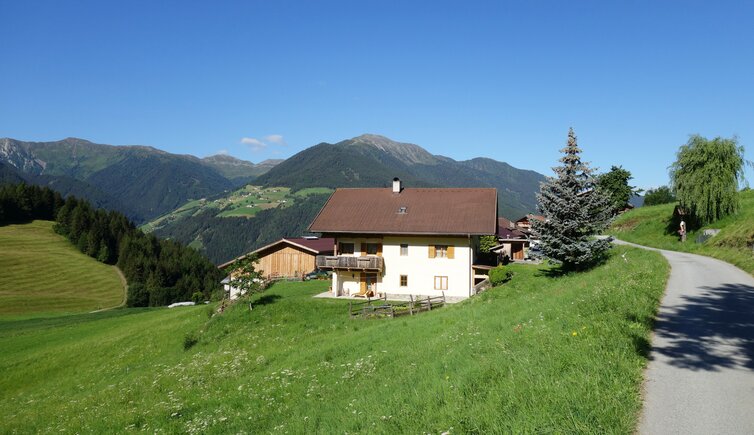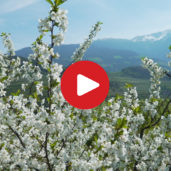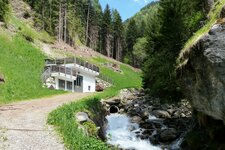Guelfo Castle, St. Valentine, Bee Trail - tiny Valgenauna holds some promising destinations
Image gallery: Valgenauna
Between Trens and Mules, the slopes climb towards the Cima dei Cacciatore, literally the Hunters' Peak called Jagerspitzl in German. This is the source of the Rio di Valgenauna stream, which flows down to the small hamlet of Valgenauna (Valgenäun). Here, you have just passed the 1,000-metre mark and are standing on the green valley floor of the Upper Valle Isarco: As the rainfall is well distributed, this area in the north of South Tyrol is well suited for agriculture.
Two buildings catch the eye, both located just outside the village centre of Valgenauna. One is the late-Gothic Church of St. Valentine, which adds a splash of colour to the green meadows. It stands on the sunny eastern slope between Mules and Trens, and the circular walk from Trens to Mules also passes by here. The walk starts at the cultural centre in Trens and takes you to the little church, on to Valgenauna, and then to the hamlet of Mules in just over an hour, before returning to the starting point. It is more of a stroll and is also suitable for pushchairs.
An alternative is the significantly longer hike to San Valentino and Mules, which also shows you other parts of the Valle Isarco. The Bee Trail is popular with families, offering an interactive journey into the world of bees with several activity stations. The destination of this outing is Valgenauna.
The second building that catches the eye is a decorative castle: The nobles of Welfsberg once lived in Guelfo, or Welfenstein Castle, built to protect the important position along the Brennero Road. In 1918, this "Castle of Mules" fell victim to the First World War and burned down, destroying most of its art treasures. Of the many decorative turrets from the era of castle romanticism, only a small tower in the northeastern corner of the surrounding wall has survived. Parts of the castle, such as the roof and some of the ceilings, have been restored in the last decades.



































